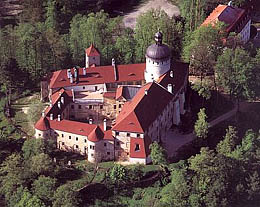
Volunteers from Europe and Asia helped at Grabštejn Castle
 |
The INEX-SDA project has a long tradition at Grabštejn and, thanks to volunteers, the 13th-century castle has transformed from a former ruin into an attractive historical monument over the past 17 years. "This year we also prepared the Grabštejn summer residence, which will take place next weekend. For example, we stretched a tarp for the stage," added Procházková.
The castle warden Jan Sedlák praised the volunteers. "They were skilled and hardworking. Previously, many young people from the USA and Western Europe came to work with us, but lately, volunteers from Eastern Europe and Asia have predominated," stated the warden. The volunteers earned enough through their work at Grabštejn for accommodation and meals, as well as for excursions. This year they came from Korea, Ukraine, Poland, France, and Turkey.
The volunteers helped at Grabštejn for 10 days and enjoyed four days off. They went on trips to Ještěd, to Liberec, to the Jablonec Museum of Glass and Costume Jewelry, or on a pilgrimage to the picturesque old-fashioned village of Kryštofovo Údolí. The hosts also prepared a game called How Honza Went into the World for them. Foreigners went to the villages of Chotyně and Václavice and asked the residents for shelter and food. "We had arranged in advance with the locals that they would take in the volunteers if they worked for their accommodation," Procházková noted.
INEX-SDA has been accepting foreign volunteers for short-term and long-term stays in the Czech Republic since the early 1990s. It helps Czech volunteers go abroad. In the Czech Republic, it supports the countryside, seeks to solve ecological problems, and participates in the reconstruction of historical monuments.
The army used Grabštejn until 1989. When they left, it was in very poor condition. Up to now, the repairs of the castle have cost around 40 million crowns. The first mentions of Grabštejn appeared in the 13th century. It acquired its current Renaissance appearance after reconstruction in the 16th century. Apart from the state, many civic initiatives have helped it since 1989, including the Czech-German Future Fund, which also contributed to its restoration.
The English translation is powered by AI tool. Switch to Czech to view the original text source.
0 comments
add comment










